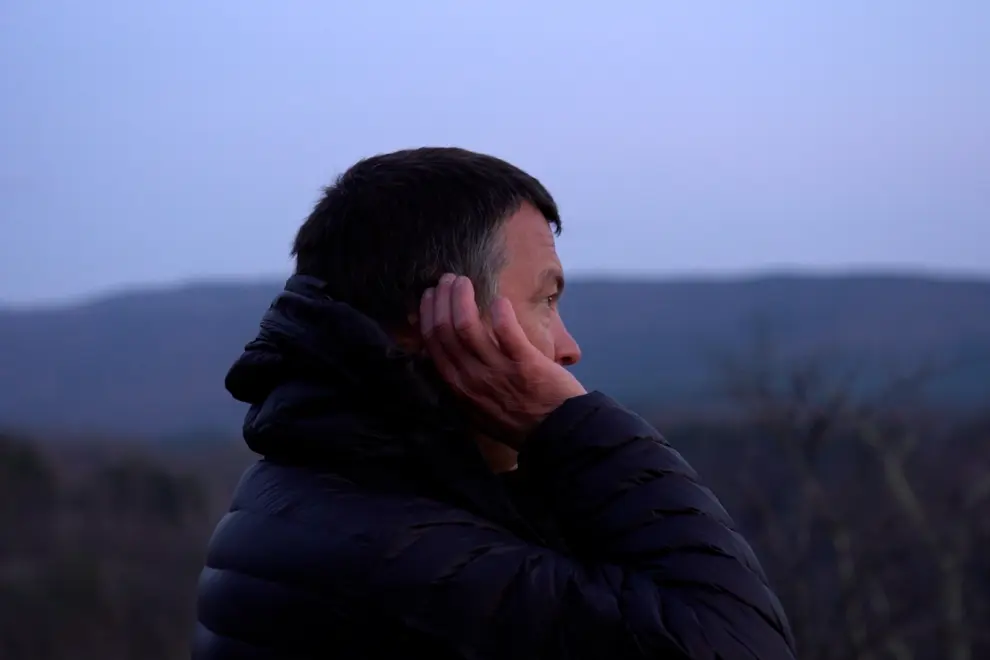Where eagle owls nest
The eagle owl (Bubo bubo) is Slovenia's largest owl. Its population in the country counts some 150 specimens. Many of them nest in the western region of Kras and enthusiasts taking part in the most recent monitoring there registered a record 16 nesting sites.
The DOPPS-Birdlife Slovenia has been organising the annual count of nesting sites of the eagle owl in Kras and the surrounding area for 25 years.
The event is known as Gugalnica, which derives from gugo, which is how the locals call the male of the bird, known as velika uharica in Slovenian.
The eagle owl is a rare and endangered species, Tomaž Mihelič, a conservation ornithologist at DOPPS, says. Knowing its whereabouts and the size of its population is essential to planning its protection.
"During the group monitoring, we check the nesting success, and in this way we can get a good insight into the state of the population," he explains.
https://youtu.be/lYFmqvfJcI4
Anyone can take part in the monitoring, which has become a social event. This year some 150 people took part.
Night watch most successful method
The group monitoring is held in the evening as the most successful method. During the breeding season in early March, it is possible to hear territorial calling of Europe's largest owl at dusk.
On the agreed day, eagle owl enthusiasts gather in the parking lot outside the Škocjan Caves in the afternoon to get some basic instructions from Mihelič. "The eagle owl will sing only for a short while in a day, between five and up to 30 minutes, and for the record to be valid, it needs to call at least three times."
Divided into small groups, the participants head for one of the 56 monitoring spots spanning entire Kras - from the Škocjan Caves Park, to a series of cliffs where the Kras plateau abruptly ends high above the soft flysch lowland of Istria, and all the way to Ilirska Bistrica and the Vipava Valley.
Rock face preferred nesting spot
A major monitoring site is the point overlooking the rocks of the Lisična Cave next to Rakov Škocjan, which Primož Bizjan, a long-time DOPPS member, says is a traditional nesting site of the eagle owl.
"Eagle owls love rock cliffs," he says. Their priority is to find the best possible south-facing, overhanging rock face with holes, located at a low altitude rather than high up in the mountains.
Despite the good nesting conditions, the rock face often only supports one pair of eagle owls. "Two pairs is already a crowd in a smaller area," adds Bizjan, who has been participating in the event since its very beginning.
In all this time, he has not heard the eagle owl very often. It is a very shy and quiet bird that can easily be disturbed by a loud noise, especially human noise, which is why it is rarely heard.
More volunteers join every year
"We have started group monitoring because of the specific hooting of the eagle owl in the evening. Just one record taker cannot cover more than one point per day, but if there are more of us, we can spread out and cover virtually the whole nesting area," Mihelič says.
The first year, in 1999, only 11 volunteers took part, but the number has since increased to more than a hundred every year. They cover roughly 60 monitoring points.
Maja Mohorović took part this time for a second time after a space of eleven years. She picked the eagle owl's hoot up herself. The event was most interesting to her. "Just to be out in nature and to be able to listen to its sounds, to be in contact with it, is something special. And if you can hear an eagle owl and some animal, that's the icing on the cake," she said.

Tomaž Mihelič, a conservation ornithologist at DOPPS-Birdlife Slovenia. Photo: STA
This year 16 nesting areas have been recorded, the highest number yet. The data collected will be referred for monitoring of selected target bird species in Natura 2000, an EU-wide network of protected areas.
Population stable, electrocution cause for concern
The Slovenian eagle owl population has been quite stable. What causes concern, according to Mihelič, is the high mortality by electrocution on medium-voltage power lines. Eagle owls often use electric poles to prowl.
The project called For Kras has done much to help solve the problem. The idea is trying to find suitable ways to use Kras grasslands and face rocks to preserve select types of habitats and species in the Natura 2000 Kras area. As part of the project, 1,200 medium-voltage power lines in the area have been isolated. "This will certainly contribute to reducing the eagle owl's mortality rate."
The overall status of birds in Slovenia is not the best, Mihelič says. As farming has become more intense, farmland birds are the most threatened, and several species in Slovenia are on the verge of extinction. "The ortolan bunting is particularly endangered, and we have already lost certain species, such as the European roller and the lesser kestrel."
This is a problem not only in Slovenia, but also in other parts of the world, where the situation is possibly even more worrying. "In Slovenia, we have some species that have long been lost elsewhere in the world. One such is the red-backed shrike, which is still abundant in Slovenia, but is very scarce in Western Europe," he says.


